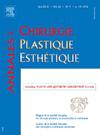在女性生殖器性别确认手术中使用腹膜:系统综述。
IF 0.5
4区 医学
Q4 SURGERY
引用次数: 0
摘要
生殖器性别确认手术(GAS)在减轻变性患者的心理不适和帮助他们实现变性目标方面发挥着至关重要的作用。阴茎内翻阴道成形术是变性女性最常见的初级生殖器重建手术之一。但它存在阴道狭窄和深度有限的风险,尤其是在阴茎和阴囊组织不足的情况下。随着变性人越来越多地寻求早期激素治疗和青春期阻断,这一局限性变得更加重要。我们对 2000 年至 2022 年间发表的研究进行了文献综述,探讨了腹膜阴道成形术在变性女性中的应用,该技术主要用于患有先天性阴道缺失的顺性别女性,以解决变性女性面临的这些挑战。研究人员从 13 篇报道了 313 名接受腹膜阴道成形术的患者的文章中提取了数据。研究发现,腹膜阴道成形术在新阴道深度和宽度方面具有优势,平均深度为 13.8 厘米,宽度为 3.5 厘米。患者对性交和阴道扩张的满意度很高,分别为 96.2% 和 94.4%。与传统的阴茎内翻阴道成形术相比,该技术并未导致并发症发生率增加。这篇综述表明,腹膜阴道成形术可作为经阴道女性生殖器 GAS 的首选,尤其是在阴茎组织有限的病例中。血管丰富的腹膜可提供具有再生能力的组织,并降低狭窄的风险。此外,腹膜不受荷尔蒙治疗的影响,可以进行足够深的阴道新管道。与传统技术相比,这种方法既安全又不会增加并发症。本文章由计算机程序翻译,如有差异,请以英文原文为准。
The use of peritoneum in female genital gender-affirming surgery: A systematic review
Genital gender-affirming surgery (GAS) plays a crucial role in alleviating psychological discomfort and assisting transgender patients in achieving their transition goals. One of the most common procedures for primary genital reconstruction in transwomen is penile inversion vaginoplasty. But it presents a risk of vaginal stenosis and limited depth, particularly in cases with inadequate penile and scrotal tissue. This limitation becomes more relevant as transgender individuals increasingly seek early hormone therapy and puberty blockade. We conducted a literature review focusing on studies published between 2000 and 2022 to explore the application of peritoneal vaginoplasty, a technique primarily used in cisgender women with congenital vaginal agenesis, to address these challenges in transwomen. Data were extracted from 13 selected articles reporting 313 patients who underwent peritoneal vaginoplasty. Peritoneal vaginoplasty was found to offer advantages in terms of neovaginal depth and width, with an average depth of 13.8 cm and width of 3.5 cm. Patient reporting satisfaction rates for sexual intercourse and dilatation achievement were high, with 96.2% and 94.4% respectively. The technique did not result in an increased rate of complications compared to traditional penile inversion vaginoplasty. This review suggests that peritoneal vaginoplasty could be consider first for transwomen genital GAS, especially in cases with limited penile tissue. The well-vascularized peritoneum provides tissue with regenerative capacities and reduces the risk of stenosis. Moreover, peritoneum remains unaffected by hormonal treatments and allows deep enough neovaginal canals. This method is safe and does not lead to increased complications compared to traditional techniques.
La chirurgie génitale d’affirmation de genre joue un rôle essentiel dans le soulagement psychologique de la dysphorie de genre et dans l’aide aux patients transgenres à atteindre leurs objectifs de transition. Parmi les procédures de reconstruction génitale les plus courantes chez les femmes trans, la vaginoplastie par inversion pénienne est souvent pratiquée. Cependant, cette technique présente des risques de sténose vaginale et de profondeur limitée, en particulier lorsque le tissu pénien et scrotal est insuffisant. Ces situations sont d’autant plus fréquentes que de plus en plus de patientes transgenres commencent un traitement hormonal précoce avec blocage de la puberté. Nous avons effectué une revue de la littérature portant sur les études publiées entre 2000 et 2022 afin d’explorer l’application de la vaginoplastie avec lambeau de péritoine, technique initialement utilisée chez les femmes cisgenres souffrant d’agénésie vaginale congénitale, pour relever ces défis chez les femmes transgenres. Les données ont été extraites de 13 articles sélectionnés, rapportant un total de 313 patientes ayant subi une vaginoplastie péritonéale. La vaginoplastie péritonéale a démontré des avantages significatifs en termes de profondeur et de largeur du néovagin, avec une profondeur moyenne de 13,8 cm et une largeur de 3,5 cm. Les taux de satisfaction des patientes concernant les rapports sexuels et la réalisation de la dilatation étaient élevés, atteignant respectivement 96,2 % et 94,4 %. Cette technique n’a pas entraîné d’augmentation du taux de complications par rapport à la vaginoplastie traditionnelle par inversion pénienne. Cette revue suggère que la vaginoplastie péritonéale pourrait être envisagée en première intention pour la chirurgie génitale d’affirmation de genre chez les femmes trans, notamment lorsque le tissu pénien est limité. Le péritoine, bien vascularisé, confère aux tissus des capacités régénératrices et réduit le risque de sténose. De plus, le péritoine est insensible aux traitements hormonaux et permet donc la création de néovagins suffisamment profonds. Cette méthode est sûre et n’entraîne pas de complications accrues par rapport aux techniques traditionnelles.
求助全文
通过发布文献求助,成功后即可免费获取论文全文。
去求助
来源期刊
CiteScore
1.00
自引率
0.00%
发文量
86
审稿时长
44 days
期刊介绍:
Qu''elle soit réparatrice après un traumatisme, pratiquée à la suite d''une malformation ou motivée par la gêne psychologique dans la vie du patient, la chirurgie plastique et esthétique touche toutes les parties du corps humain et concerne une large communauté de chirurgiens spécialisés.
Organe de la Société française de chirurgie plastique reconstructrice et esthétique, la revue publie 6 fois par an des éditoriaux, des mémoires originaux, des notes techniques, des faits cliniques, des actualités chirurgicales, des revues générales, des notes brèves, des lettres à la rédaction.
Sont également présentés des analyses d''articles et d''ouvrages, des comptes rendus de colloques, des informations professionnelles et un agenda des manifestations de la spécialité.

 求助内容:
求助内容: 应助结果提醒方式:
应助结果提醒方式:


